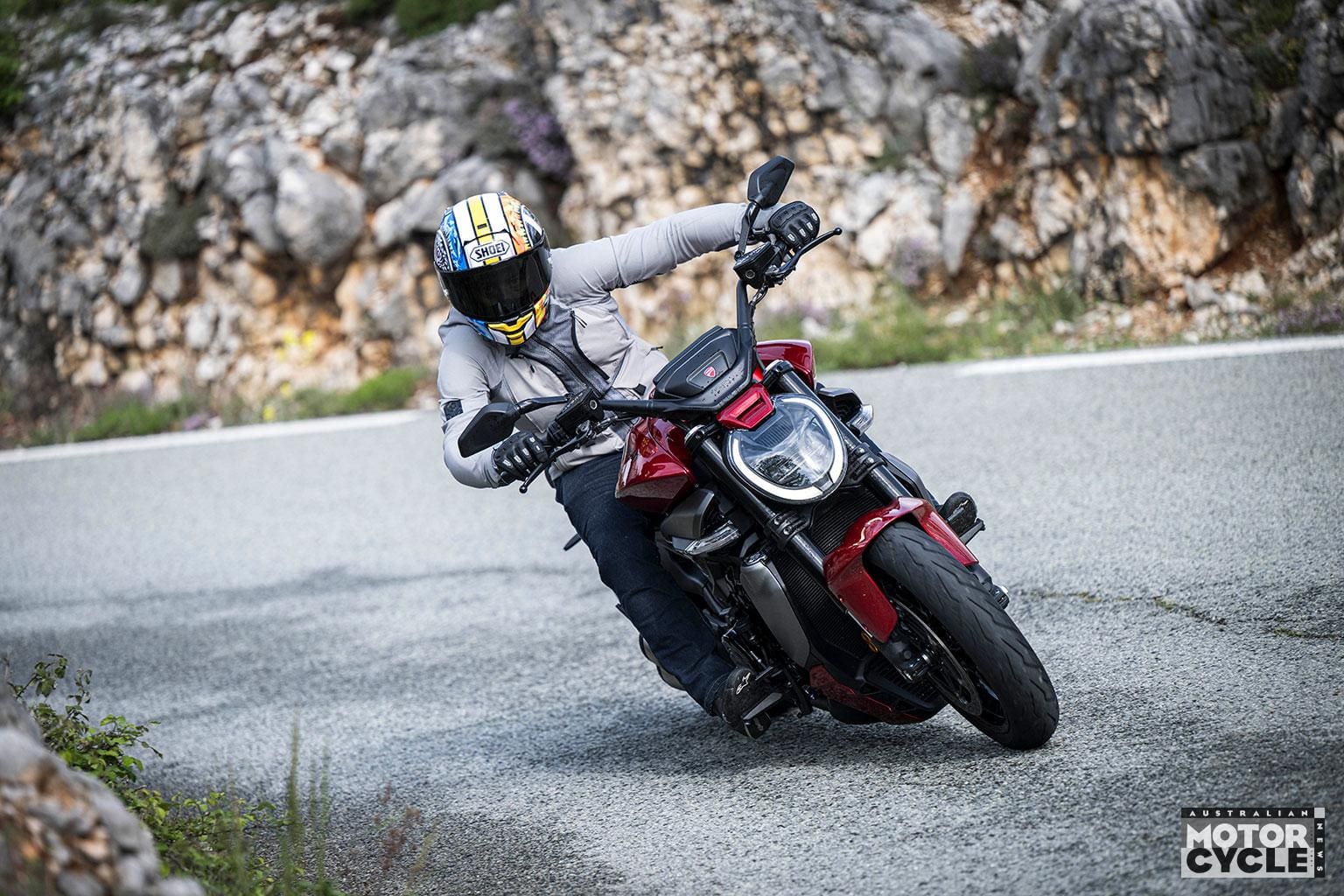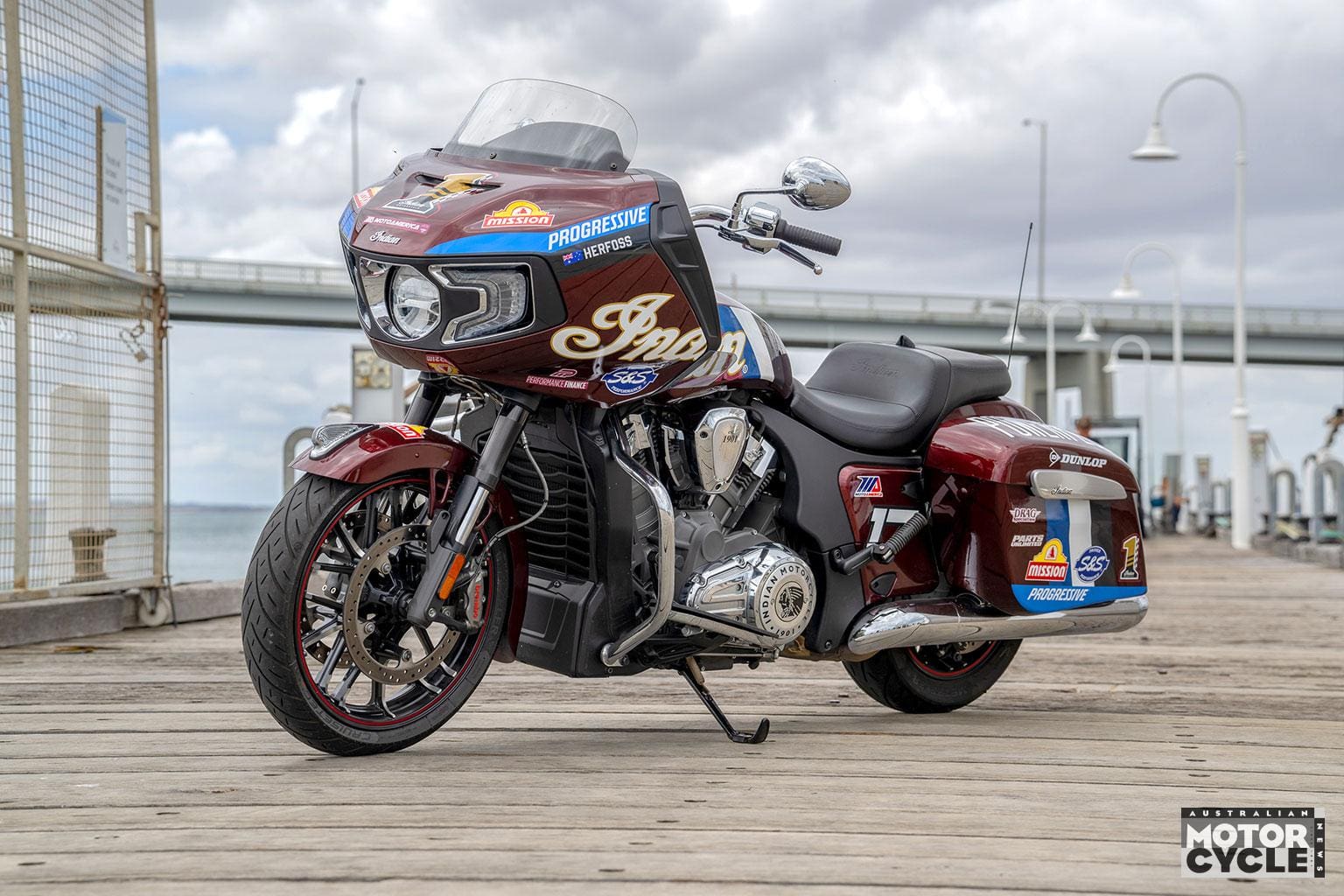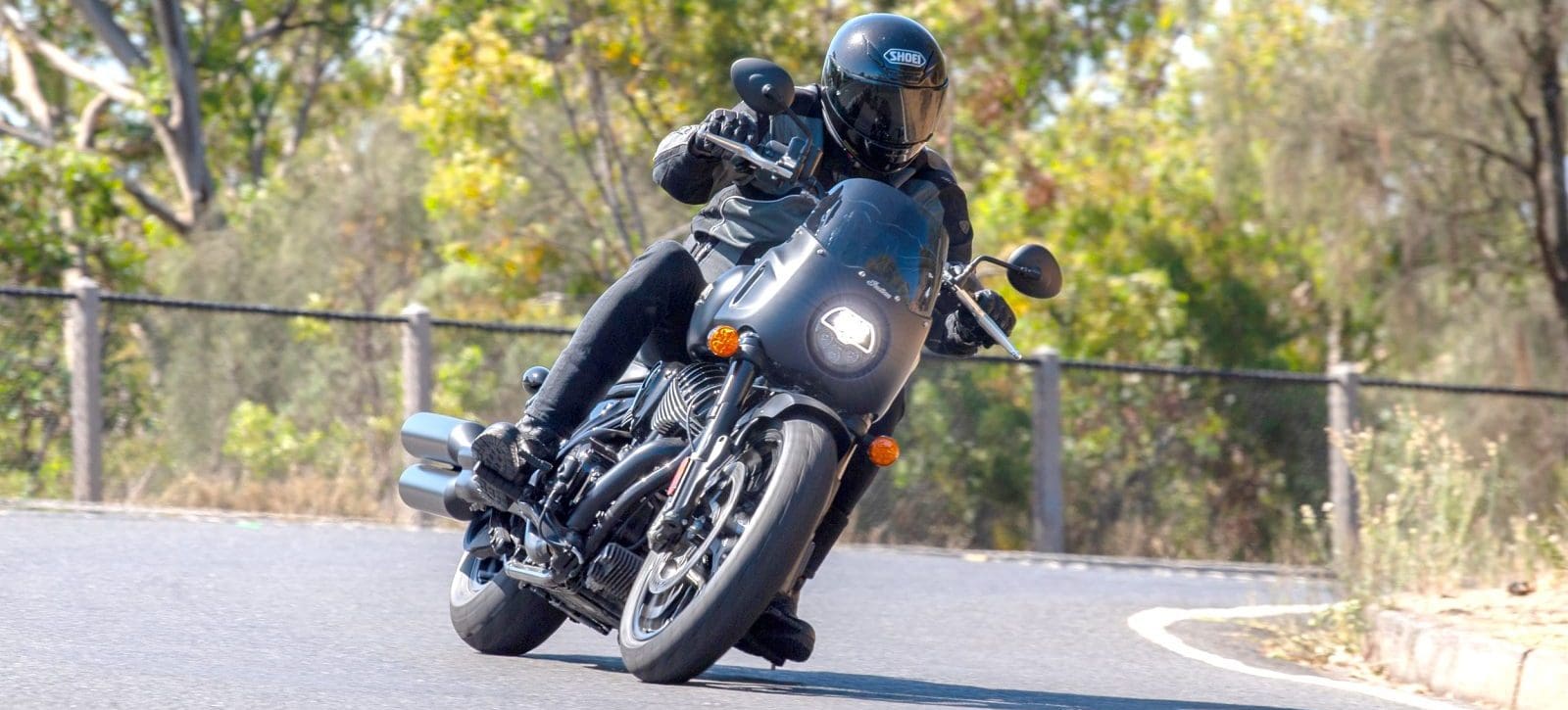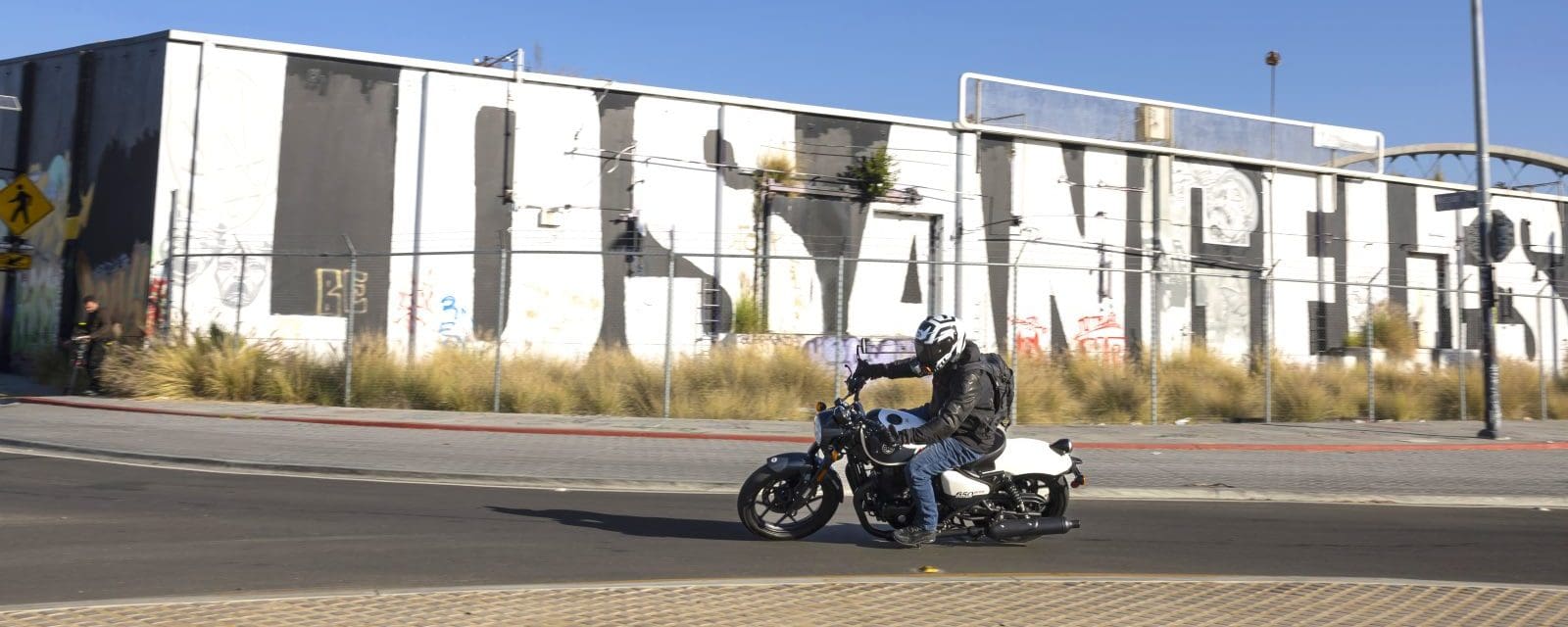To my eye, the Fat Bob is a bit of an odd-looking unit. With its fat 150/80-16 front tyre and elongated LED headlight, it’s a far cry from the stereotypical Harley look. I’ve ridden most of the Softail range in the last 18 months and on the ride home along Sydney’s M7 Motorway, I made the early assumption that it was just another flavour of Softail, and much the same as the last bunch I’ve ridden.
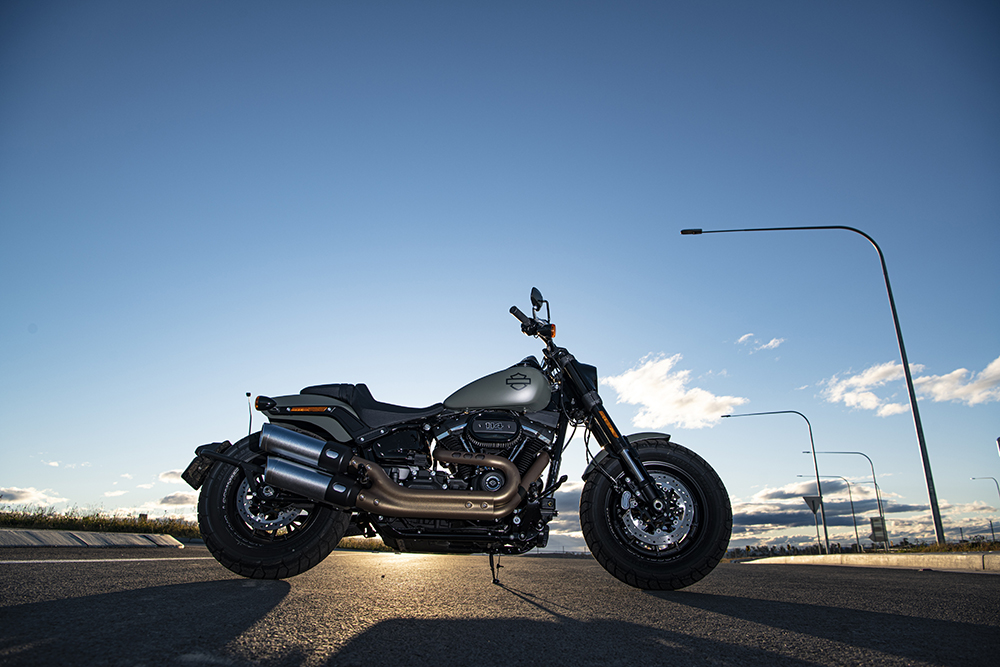
But dismiss the Fat Bob at your peril, because when you get off the motorway and hit the mean streets you gradually start to understand that the Fat Bob is more than just another Softail with different tins.
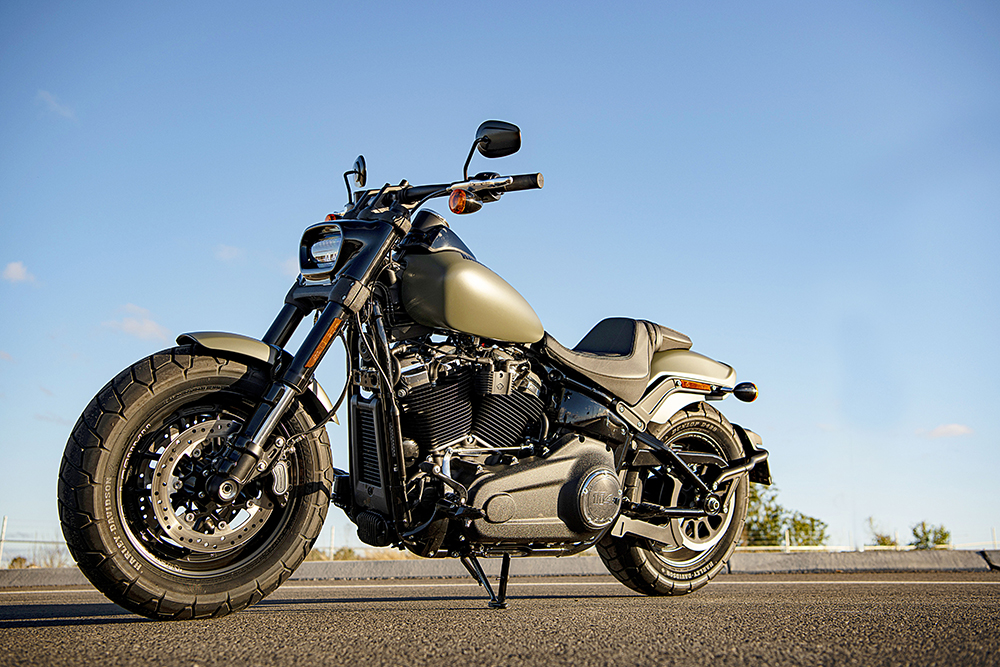
Bob’s a bit sneaky with the way he gets into your head. At first, you think ‘yeah, it’s okay’ and before you know it, you’ve taken the long, long way home just so you can ride it a little longer. The more I rode the Fat Bob the more I liked it, and the more I liked it, the more I’d rode it – I barely got off the thing.
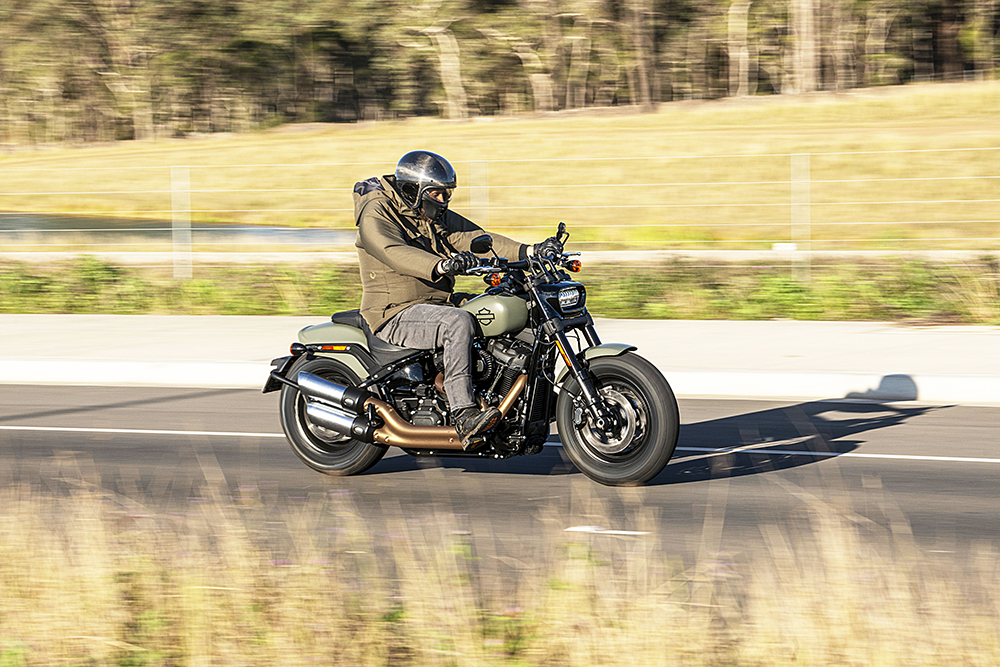
The Fat Bob is only available with the 114 cubic-inch Milwaukee-Eight engine, the 107 cubic-inch version is no longer an option. I can’t say I’m sad about that – cubes rule! I’ve heard it said that the 107 is a better around-town engine which I reckon is total horse dung. For my mind, the pushrod-operated 1868cc V-twin and its 155Nm of torque at just 3500rpm makes it a far more engaging engine in every way.
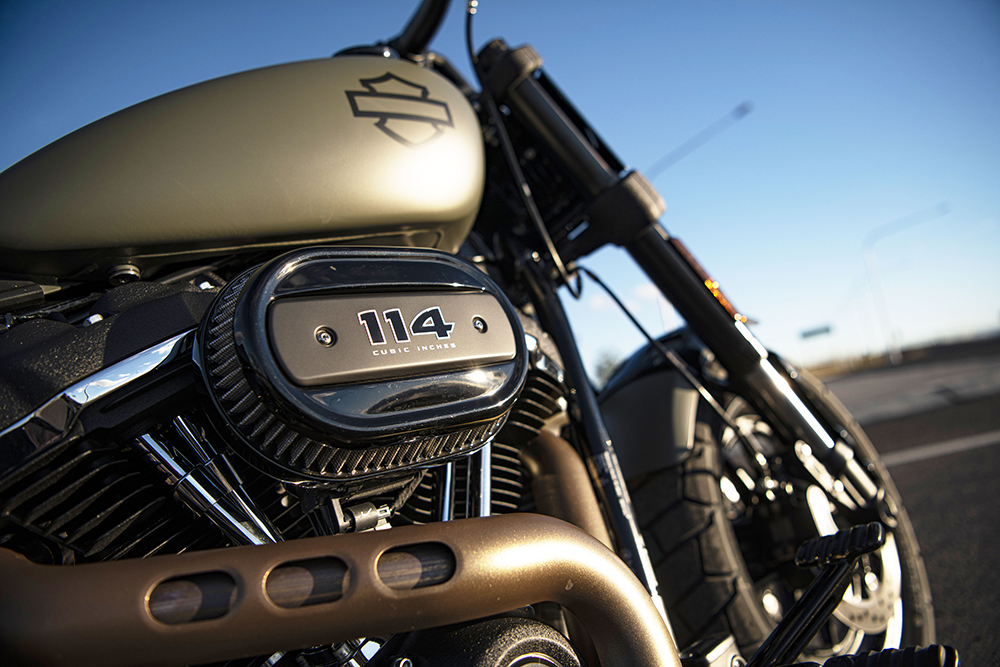
With that sort of torque available low down it’s pointless revving the engine hard and you’re better off just riding the wave of torque, short shifting through the typically notchy-feeling six-speed ’box and putting yourself in cruise mode. If you’re not used to the big V-twin Harley experience you can find yourself rolling along in lower gears than you need to, and it takes some mindfulness to click up and rumble along.
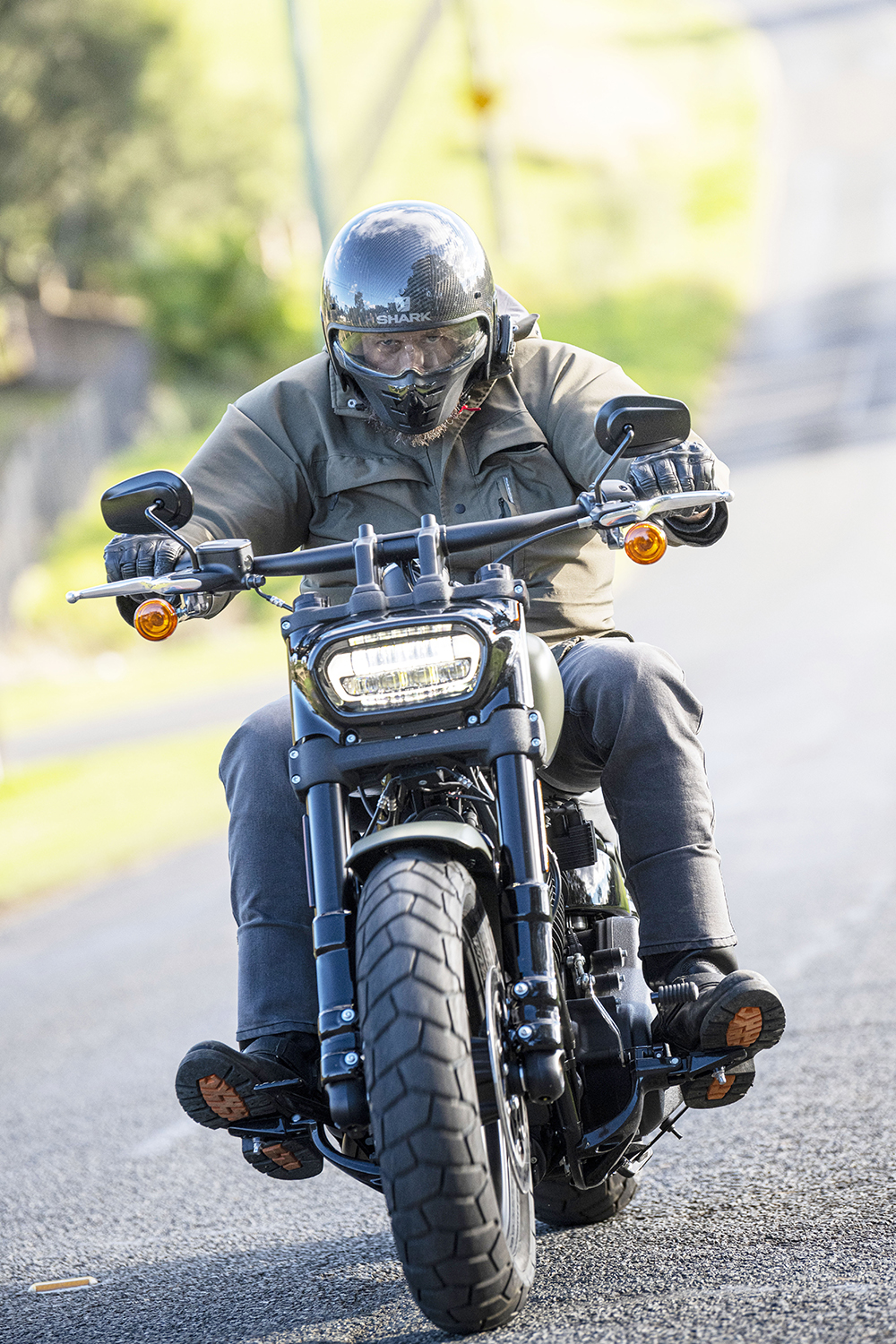
And all that low-down torque has another appealing knock-on effect. Just like it does on the firm’s 114-equipped Street Bob, it means great big feet-up rolling burnouts – only it does it better!

The Fat Bob’s 306kg (wet, claimed) keeps the front tyre on the road and the rear wheel spinning if you’re overly exuberant with your clutch and the long 1615mm wheelbase means predictable and stable power slides are achievable exiting corners.

This sort of riding isn’t for everyone, and tyre life will be an issue if you do persist, but that’s okay because the Fat Bob isn’t just a one-trick pony. The handling is on the good end of the Harley spectrum; if you’re coming from a sportsbike or sports-tourer you’ll find the turn-in and changes of direction difficult, and body position is crucial if you want to get the Bob around a corner with tenacity and without shaving your footpeg off.
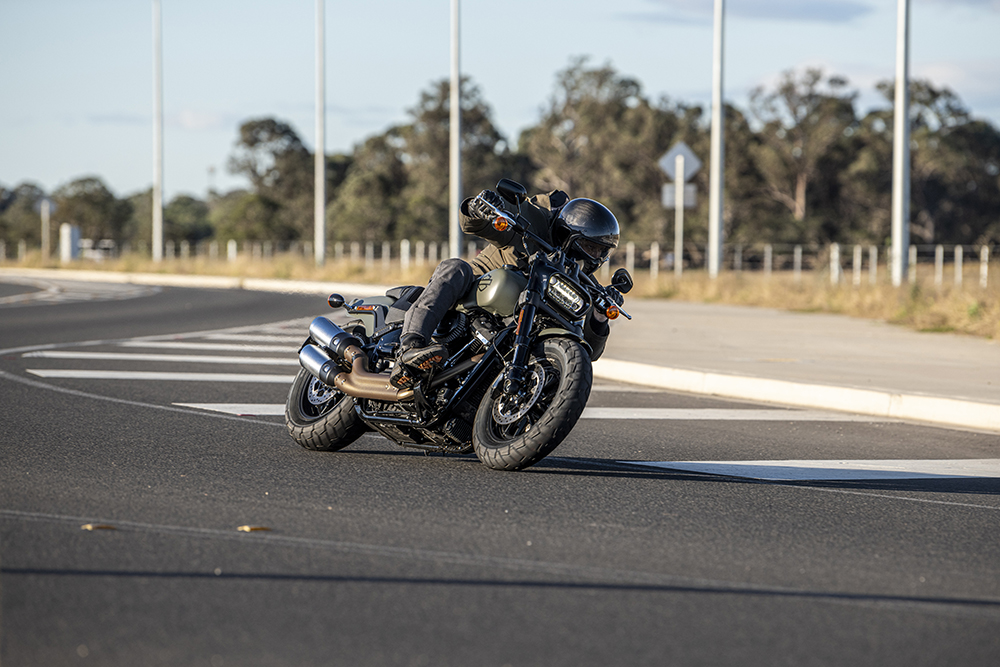
However, if you own or have been riding wide-arse style bikes like the Motor Company’s Breakout with its 240-section rear tyre, it’ll feel like a 250 proddy racer. The fat front tyre means it turns a little slower than bikes like the Street Bob with it’s 100/90-19 front tyre, but it rewards you with good feedback from the front despite the lack of rider weight over the ’bar, and supreme stability throughout the cornering process.
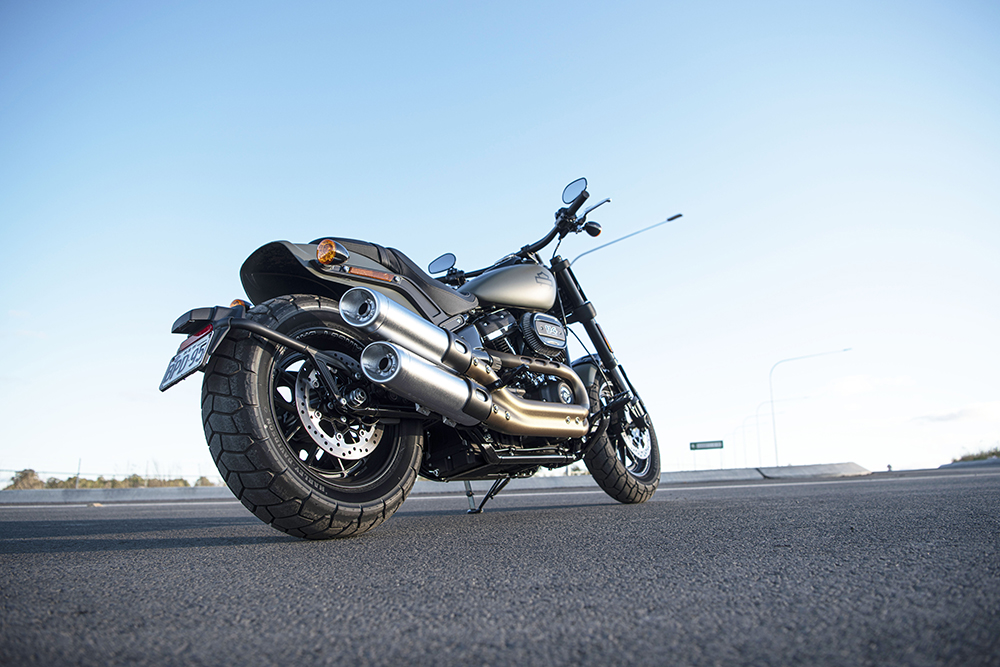
The Showa 43mm USD fork offers no adjustment, but works well enough and combined with the fat tyre makes light work of smoothing out the ride at the front. The rear monoshock offers hydraulic preload adjustment actuated via a handy knob just below your right butt cheek. Even with my plumpness on board, it handled everything I threw at it without complaint and even at pace it doesn’t wallow or become nervous through bumpy corners.
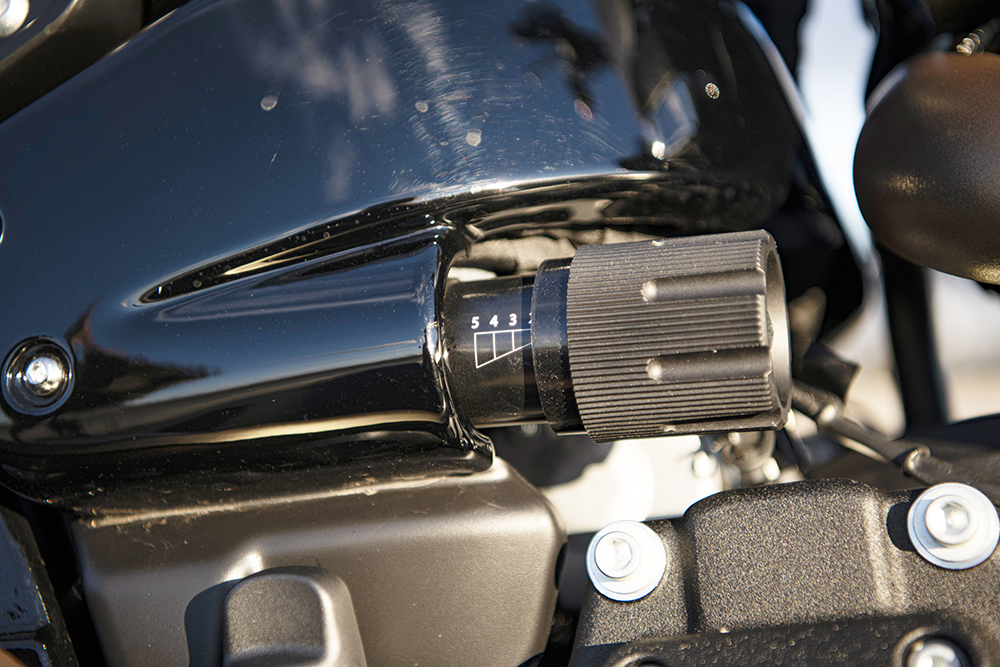
A lot of mud gets slung at Harley about the braking performance of its range and that is somewhat justified. The Fat Bob’s braking is neither brilliant nor terrible, and considering the twin 300mm rotors and four-piston calipers up front and a single 292mm disc and twin-piston caliper on the rear are responsible for pulling up almost half a tonne of bike and rider, I reckon braking power is sufficient. The downfall is the feel; the front’s wooden, lacks feel and reminds me too much of a drum brake.

Considering what the opposition is throwing at its cruisers it really is time that Harley lifted its braking game to a level at least comparable to its competitors. The ABS – which is the only rider aid on offer – works very well and even on my dodgy gravel driveway it doesn’t lockup nor does it run on when the system thieves the brake pressure.
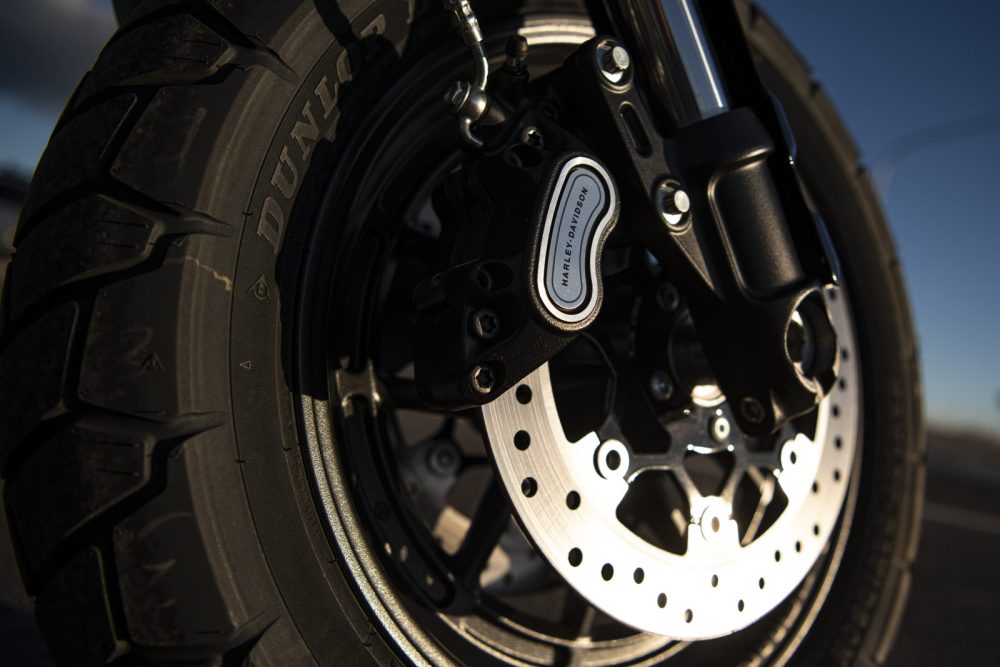
The seat height is a squat 710mm but, even for a six-foot one unit like me, there’s plenty of room for the legs when your feet are perched on the forward-mounted controls. The consequence of the roominess is the low footpeg position. H-D claims that there is 31 degrees of lean angle on the right and 32 degrees on the left, but it felt to me there was considerably less on the left-hand side. Perhaps Harley measures banking angle from ground to footpeg and doesn’t take the stand into account because on left handers the stand is the first thing to hit the deck.
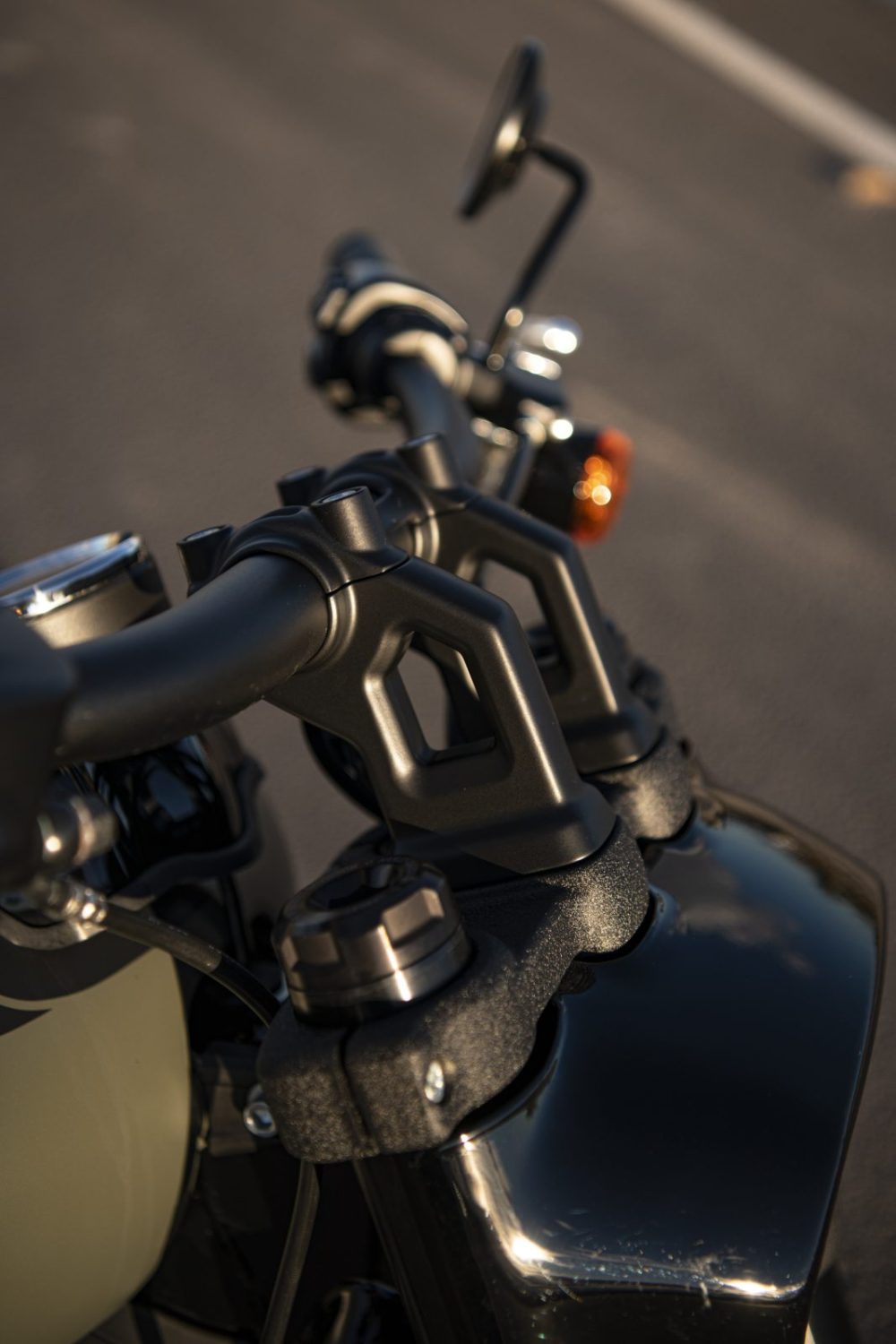
Dragging ’pegs and making sparks looks cool, but if you’re equipped with big feet like I have your heels are actually the first thing to scrape if you don’t reposition your feet for fast cornering. On a few occasions my feet were dragged off the ’pegs which can cause some undergarment stains if you’re cornering with commitment.

The electronics cupboard is a bare affair on the Fat Bob. There are no modes, no cruise control and not even traction control gets a look in. The lack of electronic aids suits Harley’s old-school image but it doesn’t suit the premium price tag when compared to offerings from rival manufacturers.
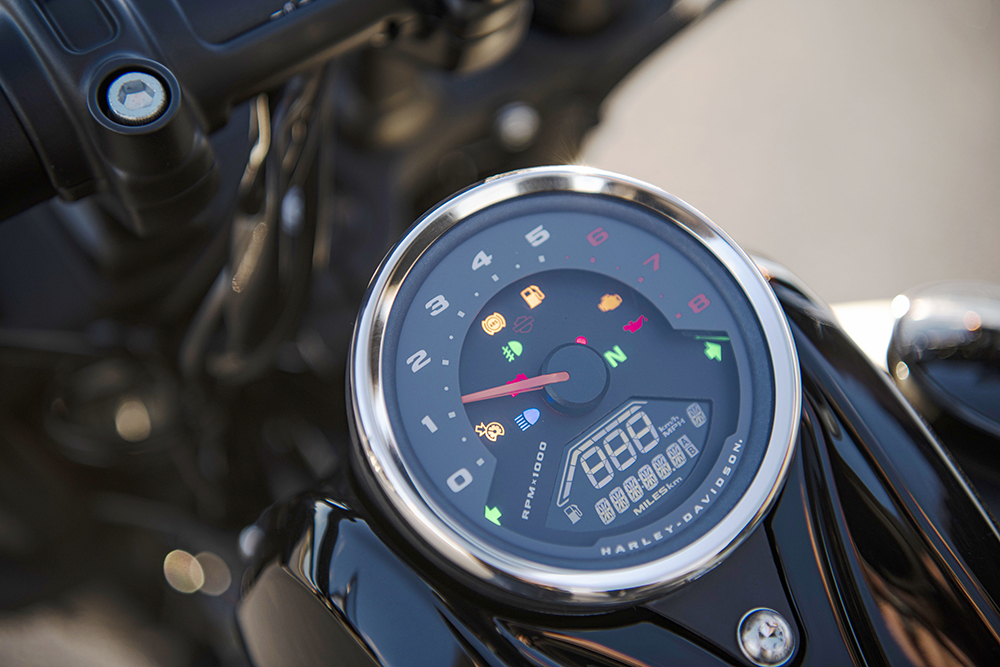
The mirrors on the Fat Bob don’t take away from its squat stance – they give you a decent view behind and don’t suffer from V-twin vibes. They complement the bike’s look, but sit just 45mm above the ’bar and the hard knuckle of my glove continuously snagged the mirror – I am working with a 3XL paw, though. You do get used to it and alter your hand position to suit, but in the heat of the moment, you can still get your glove hung up.
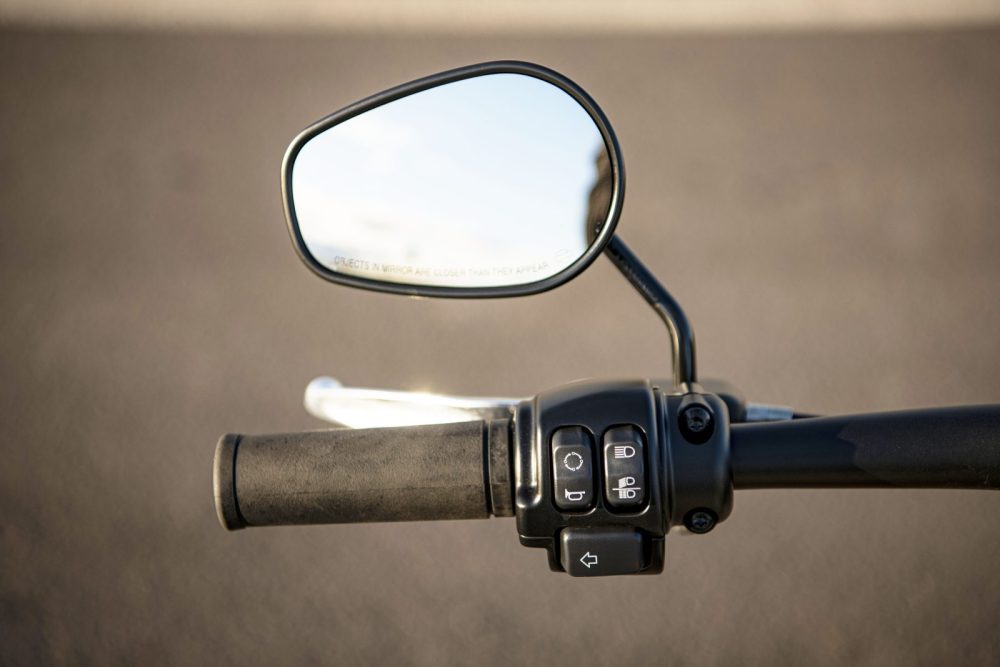
The fuel tank holds 13.6L of juice and initially the Bob seems extremely frugal for such a large mill, but the LCD fuel gauge drops faster after the halfway mark. Still, I averaged 5.2L/100km which for a big sucker with a big sucker riding it is pretty good.

There’s a bunch of Harleys with the instruments located in the handlebar clamp but the Bob runs an old school tank mounted set up – it’s easier to see because it’s larger, but it means you spend too much time looking down instead of where you’re going.
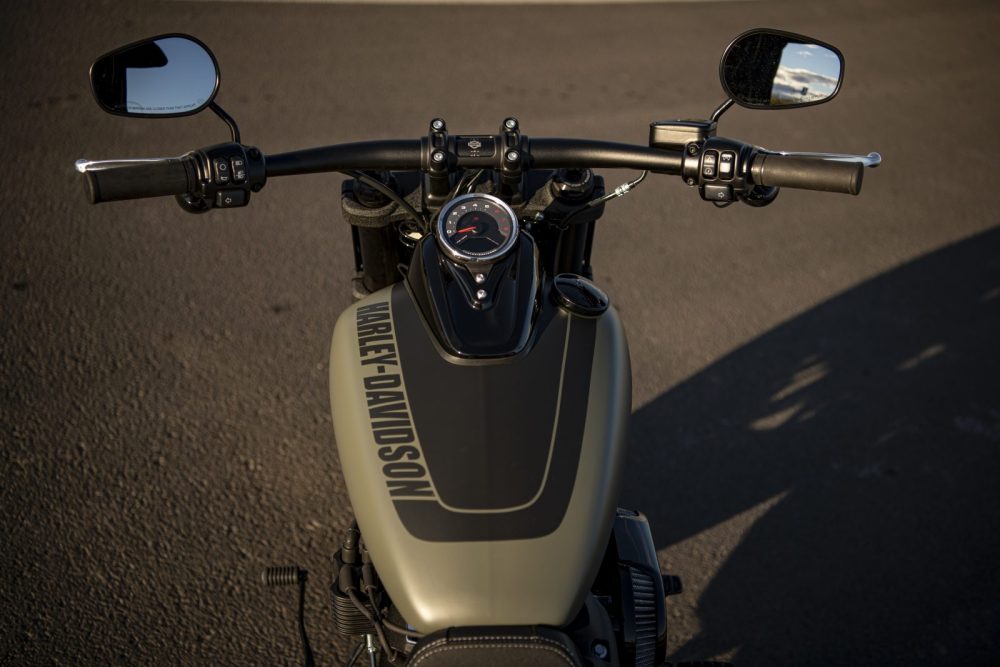
The seat is well shaped, well padded and has some fancy patterns that do nothing other than make it look swish, but it’s these little details that mean the overall fit and finish of the Fat Bob is top notch. The bronze-coloured header covers look trick, and the silver mufflers look good but mumble rather than bellow.
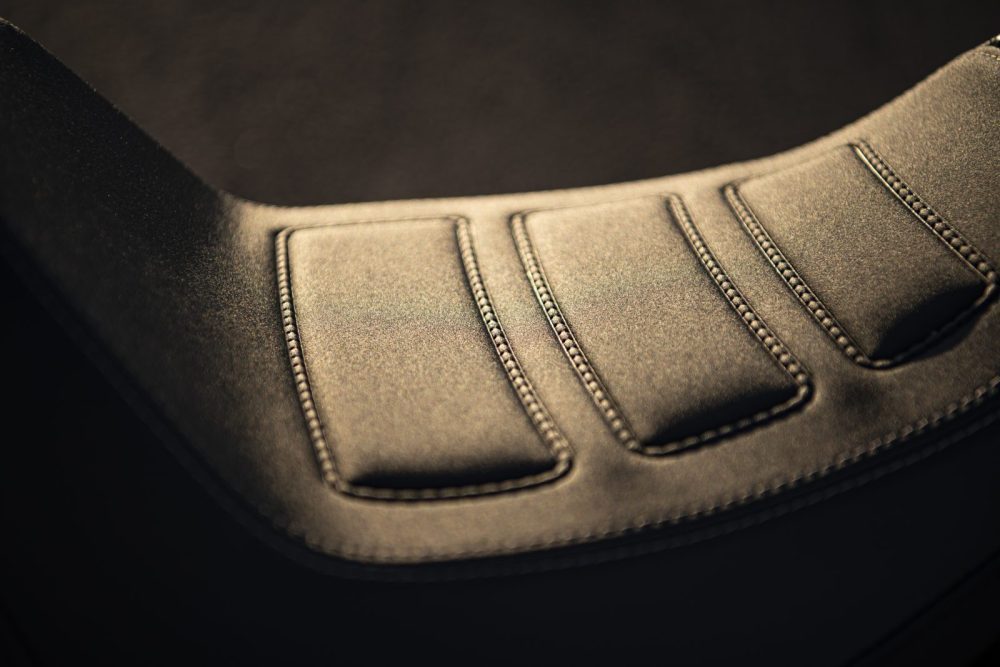
The Fat Bob’s real downfall is its price. With a $32,995 start, it’s right in the mix with some heavy hitters of the cruiser market such as Indian’s $2500 less-expensive Chief Bobber Dark Horse which boasts seven extra Newton-metres of torque.
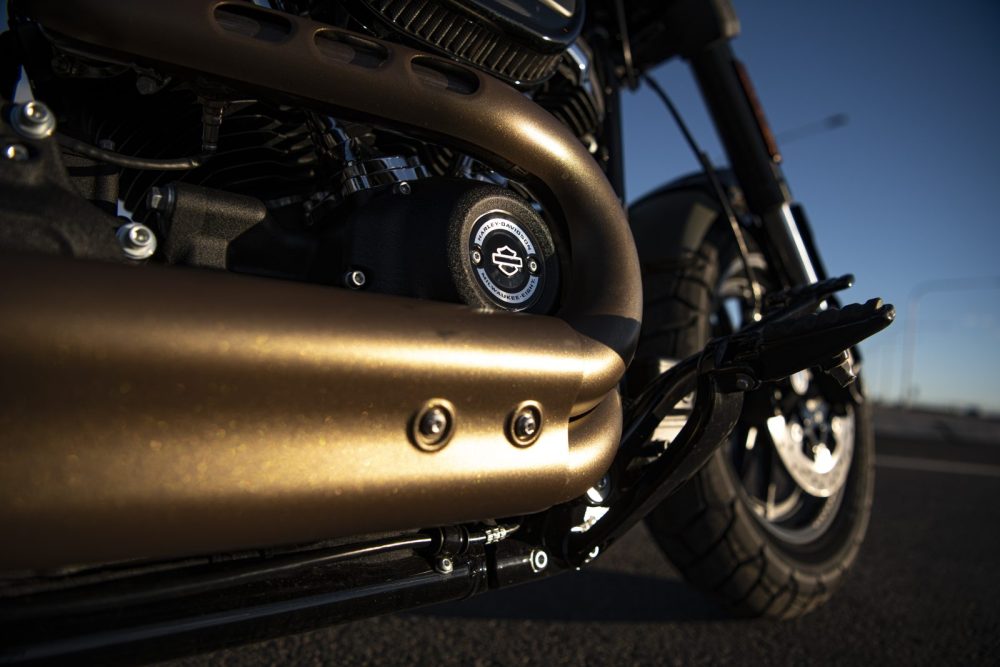
Then you’ve got Triumph’s mighty Rocket 3. The Rocket 3’s 2458cc triple puts out a massive 221Nm of torque, arguably handles and stops better and has a comprehensive suite of electronics. Its starting price is $3555 more than a standard Fat Bob in black, or $3190 more if you in anything other than black. It may be argued that the opposition lack the old’s-cool cruiser cred of the Harley and, if you agree, it’s hard to put a price on that.

The Fat Bob is not for everyone and not for every situation, it’s such a unique looking bike and a way of having a Harley that doesn’t look like the same old cruiser. It’s comfy enough to cover a bit of distance, but for short snappy trips around the ’burbs it’s the bomb. I’ve ridden almost the entire Softail range in the last 18 months and, despite my early reservations, the Fat Bob’s my favourite.

TEST: PETE VORST PHOTOGRAPHY INCITE IMAGES

